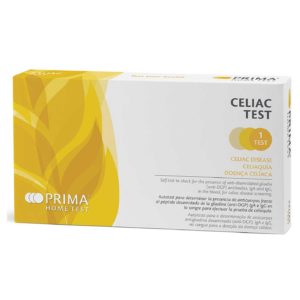Gluten-related health issues are incredibly common, with both gluten intolerance and coeliac disease affecting a large number of people. However, there is often confusion around distinguishing between the two conditions. This article explains the key differences, look at symptoms, diagnosis, and management.
What is Gluten?
First, it’s important to understand precisely what gluten is. Gluten refers to proteins found in certain cereal grains, including wheat, barley, rye and oats. These proteins give bread and other baked goods their stretchy, elastic texture.
Gluten is commonly added to foods like soups, sauces and condiments to improve texture and flavour. It’s also found in foods you might not associate with grains, like chicken nuggets and lunch meats.
Gluten Intolerance
Gluten intolerance, also termed non-coeliac gluten sensitivity (NCGS), refers to difficulty digesting gluten. If you have gluten intolerance, consuming gluten can trigger unpleasant gastrointestinal and systemic symptoms. However, it does not cause damage to the small intestine.
Estimated to affect around 6% of people, common symptoms of gluten intolerance include:
- Bloating
- Abdominal discomfort
- Diarrhoea
- Constipation
- Headaches
- Fatigue
- “Foggy mind”
- Joint pain
Symptoms typically begin hours or days after gluten exposure. The severity can vary between individuals; some only react to large quantities of gluten while others are highly sensitive.
There are no definitive medical tests that can diagnose gluten intolerance. Eliminating gluten from the diet for several weeks and monitoring symptoms is the main diagnostic approach. Symptoms improving on a gluten-free diet, then returning with reintroduction of gluten, helps confirm gluten intolerance.
Coeliac Disease
Coeliac disease is an autoimmune disorder also triggered by gluten. However, unlike gluten intolerance, it causes damage to the small intestine lining. Estimated to affect 1 in 100 people, it can develop at any age after gluten is introduced into the diet.
When someone with coeliac disease consumes gluten, their immune system attacks and inflames the small intestine. Over time, this destroys the fingerlike villi lining the intestine which are vital for absorbing nutrients.
Consequently, common symptoms of coeliac disease include:
- Diarrhoea
- Abdominal pain
- Bloating
- Unintended weight loss
- Fatigue
Left untreated, coeliac disease can lead to malnutrition, osteoporosis, infertility and certain cancers. Thankfully, once diagnosed, symptoms can be managed with a strict lifelong gluten-free diet.
Several medical tests can help diagnose coeliac disease, including:
- Serology testing: Blood tests that detect high levels of antibodies present in coeliac disease.
- Endoscopy & biopsy: Taking small tissue samples from the intestines to check for damage.
Key Differences Summarised
| Gluten Intolerance | Coeliac Disease |
|---|---|
| Not an autoimmune disease | Autoimmune disorder |
| Does not damage intestine | Causes intestinal damage |
| Wide range of GI and systemic symptoms | Mainly GI related symptoms |
| No specific diagnostic tests | Can be diagnosed definitively via tests |
| Symptoms manage by gluten-free diet | Requires strict life-long gluten-free diet |
Starting a Gluten-Free Diet
Eliminating gluten is essential for managing symptoms of both gluten intolerance and coeliac disease. Thankfully, following a strict gluten-free diet is possible with some adaptations.
It’s important to carefully check labels of any processed or pre-prepared foods for gluten-containing cereals or additives. Many naturally gluten-free foods like fruits, vegetables, meat, fish, rice and potatoes can still form the basis of a tasty, nutritious gluten-free diet.
Various specialist gluten-free substitute products are also now widely available in supermarkets and health food shops, including:
- Gluten-free bread
- Gluten-free pasta
- Gluten-free flour
- Gluten-free cereal
With some adjustments, those with gluten issues can still enjoy varied, healthy diets and avoid debilitating symptoms triggering by gluten exposure.
Living with Gluten Sensitivity: Beyond the Diet
Pivotal as a gluten-free diet is, there is more to handling gluten intolerance or coeliac disease than keeping away from some kinds of food. The following hints are very useful:
- Always read the labels: Gluten finds its way into many foods, seasonings, and sauces and can even pop up in some medicines.
- Explain your needs clearly to the server and chef at a restaurant; ask questions if need be. Never hesitate to ask.
- Plan ahead: Keep gluten-free snacks on hand for emergencies or when travelling.
- Be aware of cross-contamination: Have gluten-free utensils and surfaces to avoid cross-contamination with gluten-containing food.
- Be nutritionally balanced: Seek the help of a registered dietitian in order to receive all the proper nutrients in the gluten-free diet.
- Join support groups: Share your experiences with people who are having, or who have had, similar problems.
- Follow-up appointments: Follow up with regular visits for the checking of health status and further management plan adjustment if needed.
Again, adaptation to the gluten-free lifestyle takes time. So be patient with yourself in learning and adjusting.
Summary
Distinguishing between gluten intolerance and coeliac disease can be confusing. However, understanding the differences in symptoms, diagnostic methods and intestinal damage is vital for determining the right management approach.
The good news is that with dedication to a gluten-free diet and monitoring of symptoms, those struggling with gluten can make dramatic improvements to their health and quality of life.
Detecting Coeliac Disease with a Home Test Kit
Coeliac disease is an unfortunate autoimmune disorder that causes inflammation in the small intestine when gluten is consumed. Gluten is a protein found in wheat, barley and rye. This inflammation prevents the small intestine from properly absorbing nutrients from food. The disease can cause symptoms like diarrhoea, abdominal pain, bloating, constipation, nausea and vomiting. Left untreated, coeliac disease increases your risk of osteoporosis, iron deficiency anaemia and even small bowel cancer.
Fortunately, coeliac disease can be easily managed with a lifelong gluten-free diet. The key is getting properly diagnosed, which is now possible from the comfort of your own home thanks to PRIMA Lab SA’s clever little home test kit.
What is the Coeliac Home Test Kit?
The Coeliac Home Test Kit is a simple means of checking yourself for coeliac disease using a small blood sample. It detects antibodies in your blood called anti-deamidated gliadin (anti-DGP) IgA and IgG antibodies. These antibodies are produced when your immune system mistakenly attacks gliadin, a protein component of gluten. Their presence indicates your body is reacting negatively to gluten, signalling coeliac disease.
Specifically, the test kit uses lateral flow immunochromatography to detect these antibodies. The test strip contains deamidated gliadin protein. Any anti-DGP antibodies in your blood sample will stick to this protein. This triggers a colour change on the test strip, confirming a positive result.
Who Should Use the Coeliac Home Test Kit?
The Coeliac Home Test Kit is useful for anyone experiencing common symptoms of coeliac disease, such as:
- Chronic diarrhoea
- Abdominal pain and bloating
- Constipation
- Nausea and vomiting
- Unexplained weight loss
You should also consider the test kit if you have a family history of coeliac disease or suffer from iron, vitamin B or folate deficiencies. These deficiencies can indicate malabsorption problems suggestive of coeliac disease.
Even if you have no symptoms, the test kit may provide helpful early screening. Catching coeliac disease early makes it much easier to manage long-term.
How Accurate is the Coeliac Home Test Kit?
Independent clinical testing shows the Coeliac Home Test Kit has:
- 94.1% specificity (accuracy identifying negative results)
- 81.25% sensitivity (accuracy identifying positive results)
- An overall accuracy of 90%
These stats make the Coeliac Home Test Kit highly accurate for an at-home screening test. Just keep in mind a positive result still requires follow-up testing by a doctor to confirm coeliac disease.
What’s in the Coeliac Home Test Kit?
The Coeliac Home Test Kit contains everything you need for a quick at-home blood test:
- 1 test cassette
- 1 vial with dropper (containing diluent)
- 2 sterile lancets
- 1 pipette for blood sampling
- 1 alcohol wipe
- Instructions
The test cassette holds the special lateral flow chromatography strip used to detect anti-DGP antibodies.
How to Use the Coeliac Home Test Kit
Using the kit takes only a few quick steps:
- Prick your finger with the sterile lancet to get a small blood sample.
- Use the pipette to collect exactly the right amount of blood.
- Deposit the blood in the vial with the diluent solution.
- Screw the lid on tight and shake gently.
- Squeeze 3 drops from the vial onto the test cassette.
- Wait 10 minutes then check the test cassette to see if a coloured line has appeared.
That’s all there is too it! Total hands-on time is about 2 minutes. If positive, further testing by a doctor is needed to officially diagnose coeliac disease.
Coeliac Home Test Kit Video Demo
Unsure about pricking your own finger? Watch this short video demonstration showing the exact process for using the Coeliac Home Test Kit:
Seeing it done makes it seem much easier!
Why Try the Coeliac Home Test Kit?
In summary, key reasons to consider the Coeliac Home Test Kit include:
- Convenience – Test yourself quickly at home without visiting a clinic
- Lower Cost – Avoid expensive diagnostic procedures unless you first test positive
- Easy Screening – Find out if you should be tested further by a doctor
- Gain Insights – Learn if gluten sensitivity may be impacting your health
Give it a try if you suspect coeliac disease or just wish to check for gluten issues. Knowing for sure allows you to take control of your health through proper diet and lifestyle changes.
Photo by Anthony Cunningham for Zoom Health UK
Zoom Health is a leading UK supplier of Home Health Tests and Earplugs
This post was originally published in 2023. It was last updated in January 2025.






